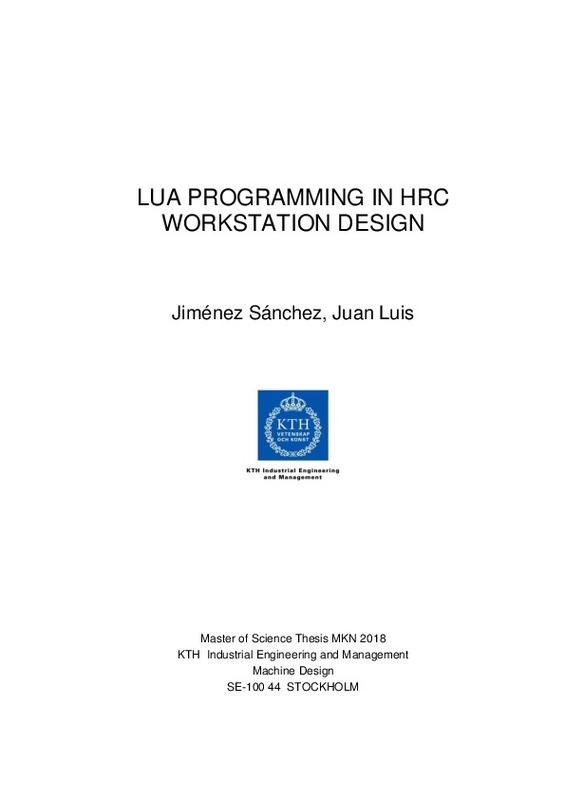|
Resumen:
|
[EN] One approach to address the future challenges of an increasingly global market’s competition and
the demographic changes of an aging workforce for manufacturing companies in developed
countries is the close collaboration ...[+]
[EN] One approach to address the future challenges of an increasingly global market’s competition and
the demographic changes of an aging workforce for manufacturing companies in developed
countries is the close collaboration between human operators and industrial robots. These humanrobot collaborative (HRC) assembly systems aim to combine the best characteristics of the human;
its flexibility, intelligence and tactile sense, with robotic speed, endurance and repeatability.
Although currently safety legislation limits the possible collaborative applications that could be
implemented in practice, large research efforts are put in order to enable practical implementation
of these future workstations.
Once these safety legislation limitations have been addressed, a need to simulate these systems
before implementing them will arise. Virtual simulations are an important part of modern
production system design and will be demanded in future assembly workstation design. A new
existing software is in development that can simulate, visualise and evaluate HRC assembly
workstations. The general goal with the simulation software is to design “optimal” workstations,
and they enable evaluations of multiple design alternatives to reach this “optimum”. The creation
of these design alternatives is challenging today as it demands a lot of manual work. The aim of
this thesis is to tackle this issue by contributing to the development and improvement of the
simulation software through the programming of scripts in the Lua language. The scripts were
developed through an iterative and trial-and-error process, combined with first-hand experience of
the author in the usage of the software.
The resulting scripts enable the user to perform simulations in a swift, efficient, automated and
simplified way in comparison to the traditional method, reducing the need of manual work to a
minimum. A large amount of simulations can be performed in a short amount of time, even without
the need of human interaction.
In addition, with the results of the simulations as a base, mathematical optimisation techniques
have been employed in order to find the optimal HRC design of a case study station. The case
study has been conducted at a workstation in a heavy vehicle manufacturer. The results of the case
highlight the improvements made to the software by the scripts and how these can be used to
efficiently design the HRC workstations of the future.
[-]
[ES] En este trabajo se utilizará el lenguaje de programación LUA para optimizar un software de simulación experimental (Industrial Path Solutions, IPS) para el diseño de estaciones de trabajo con colaboración entre robots ...[+]
[ES] En este trabajo se utilizará el lenguaje de programación LUA para optimizar un software de simulación experimental (Industrial Path Solutions, IPS) para el diseño de estaciones de trabajo con colaboración entre robots colaborativos y trabajadores (Human-Robot Collaboration). El objetivo de la optimización será automatizar mediante scripts la tarea de probar diferentes diseños para encontrar el diseño óptimo en función de varios parámetros (tiempo de proceso, evaluación ergonómica del trabajador, valoración del diseño mediante el método de Muther para SLP). Una vez el software de simulación sea optimizado, se utilizará en un caso práctico para probar su validez.
[-]
|







